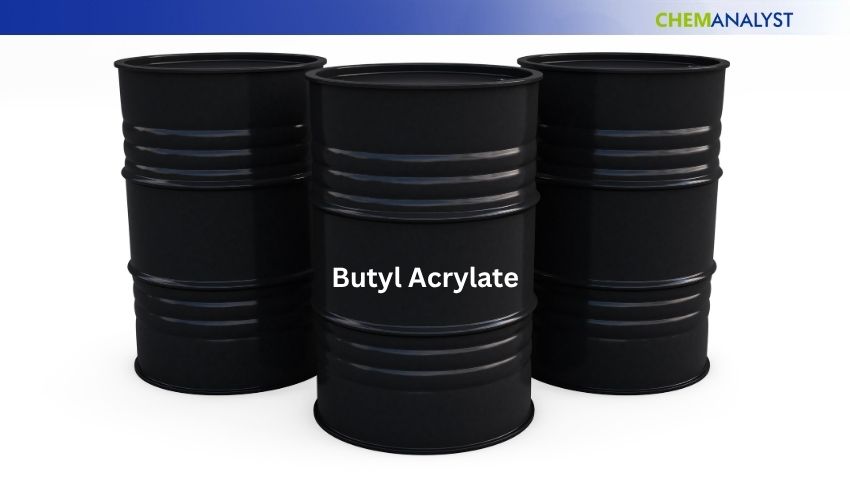Welcome To ChemAnalyst

The U.S. butyl acrylate market stabilized, fueled by stable supply and production cost. Limited demand for butyl acrylate from the downstream construction sector and ambiguity regarding trade tariffs supported the current market sentiments. Market players took a conservative approach, managing only immediate requirements, while suppliers took a steady pricing approach to mirror the balanced but uncertain situation.
The U.S. butyl acrylate market continued to showcase stability during the week ended July 18, as it is fueled by steady supply levels and stable production costs. Butyl acrylate prices were firm at prevailing levels on the back of a balanced tug-of-war between supply, demand, and conservative market sentiment. Major feedstocks, n-butanol and acrylic acid, showed no notable price movement, which helped maintain the overall cost of production stable for butyl acrylate. Exporters took a cautious approach, reducing bulk shipments and favoring contract orders in order to control stock levels efficiently. This restrained attitude maintained balance in the market, with suppliers choosing not to modify price quotations for butyl acrylate.
To the overall market situation, President Trump issued a postponement in imposing new tariffs on imports from the European Union, extending the deadline to August 1, 2025. The action stretches the post-suspension timeline initially aimed at taking more time for trade talks. Trump also clarified that there would be no more extensions, threatening that nations that do not secure trade deals within the deadline will pay over 30% tariffs. The ongoing uncertainty surrounding trade policy has induced conservative conduct in many markets, including chemicals.
Demand for butyl acrylate continued to be restricted, especially from the downstream coating and construction industries. Procuring activity for butyl acrylate continued to be restricted as purchasers concentrated on short-term requirements, shying away from bulk purchases because of prevailing uncertainty in both the construction industry and global trade policies.
Additional suppression of demand for butyl acrylate was poor performance in the U.S. construction sector. Based on the most recent figures, construction spending declined 0.3% in June, with private residential building falling 0.8%—motivated by ongoing high mortgage rates and affordability issues. Residential construction spending has dropped 3.5% from a year ago. While nonresidential construction was unchanged, manufacturing-based projects have decreased by more than 5% since last August. Public construction increased modestly by 0.5%, albeit with numerous government projects experiencing delays in funding. Builder optimism has also fallen to a more than two-and-a-half-year low, and single-family homebuilding starts are forecast to fall further. Overall, the construction sector is displaying contrary signs, with some segments performing worse than others.
Overall, the United States butyl acrylate market displays a steady but guarded tone, influenced by solid supply fundamentals and muted downstream demand under volatile trade and construction industry dynamics.
As per ChemAnalyst, the U.S. market of butyl acrylate is expected to behave in a cautious manner because there is less activity in the downstream construction industry. The prevailing uncertainty in the market is also expected to remain in place until there is a definitive answer about imposing trade tariffs.
We use cookies to deliver the best possible experience on our website. To learn more, visit our Privacy Policy. By continuing to use this site or by closing this box, you consent to our use of cookies. More info.
